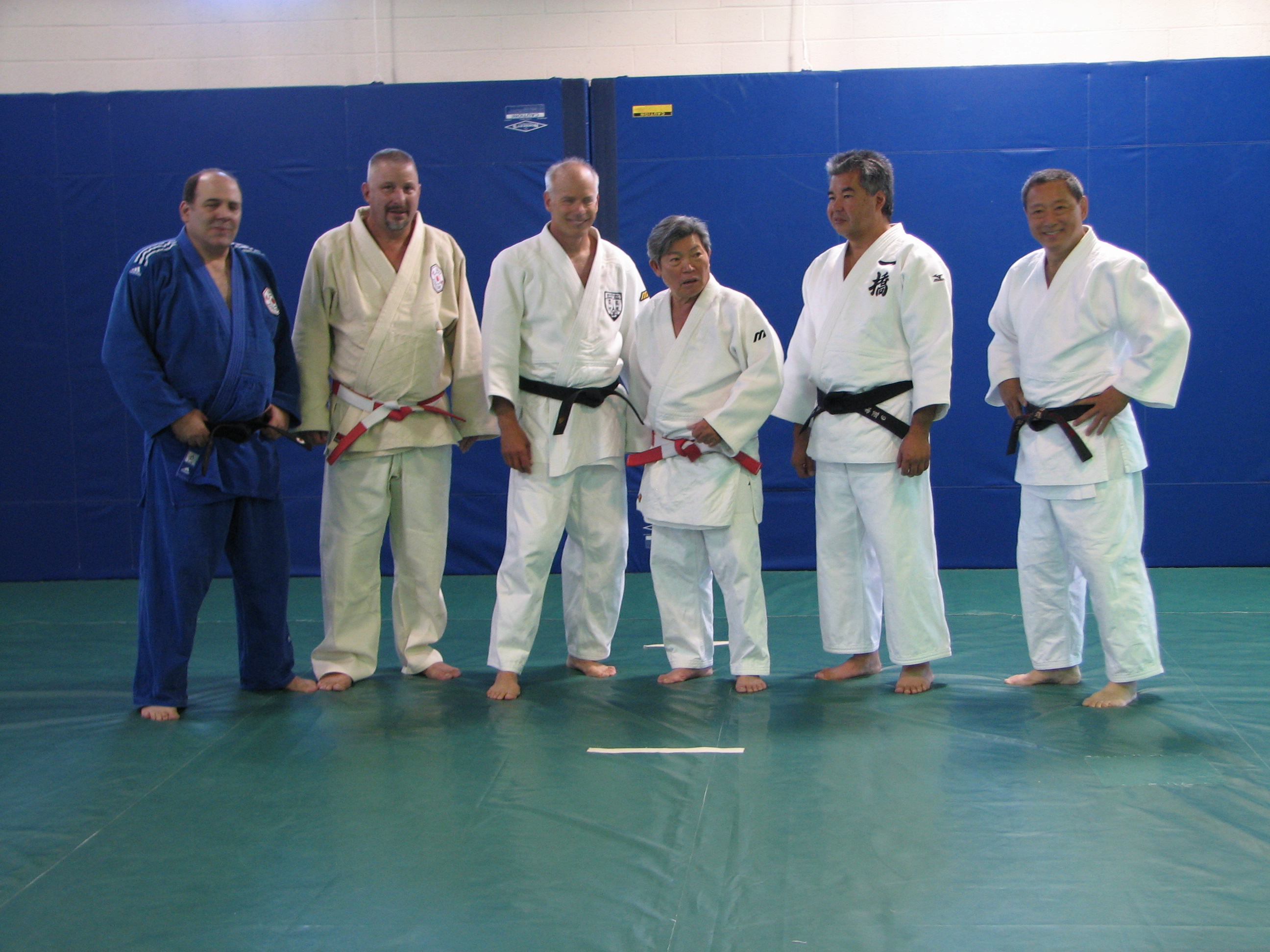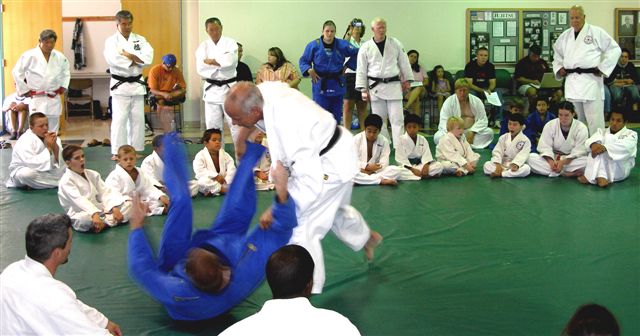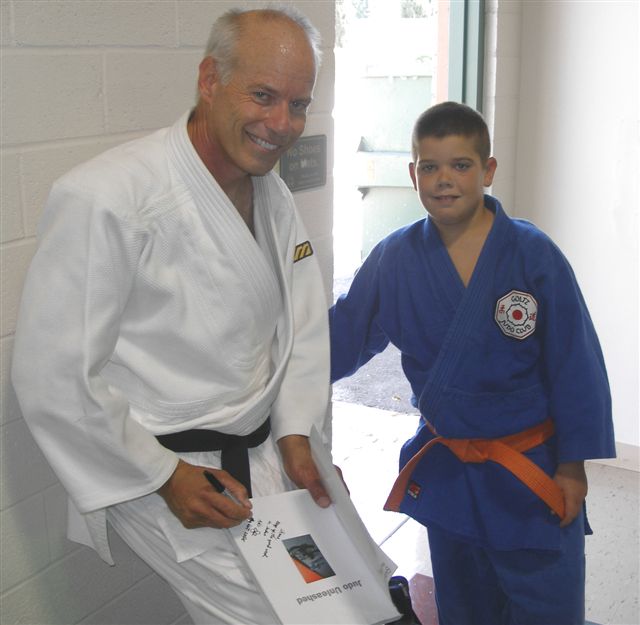Goltz Judo Club, Claremont — August 26, 2006Neil Ohlenkamp, rokudan, conducted a USJA Grassroots Clinic on August 26, 2006 at Goltz Judo Club in Claremont, California. More than 100 students participated — the largest in the yearlong series of USJA Grassroots Clinics.
Sensei Neil Ohlenkamp after a vigorous team type warm-up proceeded to show the clinic a series of movements based around attack and defense. The first series used Osoto gari as the base technique and focused on what tori can do depending on the reaction of uke. The first thing that must be understood is the basis for a successful Osoto gari. Tori must unbalance uke to his back right corner. Uke can take many actions to counter your attempt to off balance him to the right rear corner. As an example, Sensei Ohlenkamp showed three options to follow-up when your opponent attempts to prevent Osoto gari. They may push back, step back or squat. All of these body movements place uke in a position that redirects tori’s off balancing action. Sensei Ohlenkamp then went on to explain how tori can make use of each of these reactions to attack with a different throw. For example
Sensei Ohlenkamp then demonstrated Deashi harai and the Tsubame gaeshi counter, followed by Deashi harai to Tai otoshi (or seoinage). Everyone had an opportunity to practice these to get the idea of linking throws together. Another exercise Sensei Ohlenkamp showed is a wonderful warm-up exercise and helps to develop many skills, including fluid movement, technique practice, technique opportunity identification, and technique defenses. It is a series of attacks followed by defenses, which lead tori to continue with a new attack. This exercise at first can be done by adding one technique at a time until the entire series is known. Eventually tori should go through the full series twice before switching. Tori’s first attack is Tai otoshi.
An eclectic technique was the focus of the day. Sensei Ohlenkamp recognized that the following day one of the states’ largest tournaments was being held and many attendees were planning to participate in the tournament. He explained that showing new techniques or ideas for a tournament the next day would be ill-timed without having sufficient time to practice and master each one. Instead, Sensei Ohlenkamp delved into a technique that is seldom practiced called Kibisu Gaeshi (heel trip reversal) — developed by Kyuzo Mifune and recognized by the Kodokan in 1982 in the shinmeisho no waza. Here are a few video clips of the instruction:
Sensei Ohlenkamp also took the opportunity to sign copies of his new book Judo Unleashed for some of the students.
|




